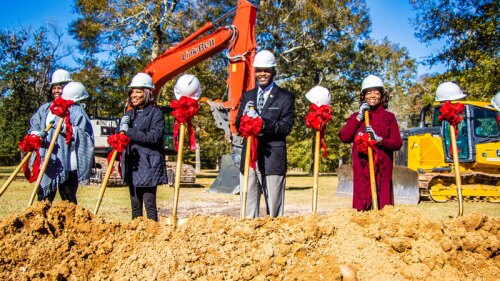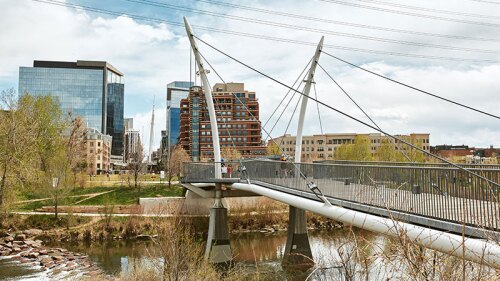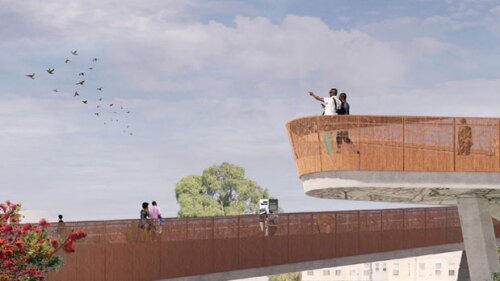Lots of studiesare emerging on the complex, overlapping network of governmental agencies on both the local and national levels. Some of these studies conclude that there can sometimes be a number of redundant agencies while others find poor coordination with other authorities. This is sometimes the situation with economic development and urban park management in the nation’s cities.
Such is the case in Pasadena, California, a city that called on the Urban Land Institute’s advisory services programto assess the Rose Bowl environs and provide the municipality with recommendations for re-envisioning and reusing the area around the iconic stadium. The study was limited to the 254-acre (103-ha) Central Arroyo area, part of the larger 723-acre (293-ha) Arroyo Seco area that spans eight miles (12.8 km) through the western portion of Pasadena, one of the region’s most visited neighborhoods due to its iconic stadium centerpiece that has helped place this area on the National Register of Historic Places.
The city, which is in the process of finding additional revenue streams to offset the stadium’s $160 million worth of renovation expenses, also suffers from too many agencies managing the public open space in Central Arroyo. In addition to the Rose Bowl Operating Company, the Pasadena Public Works Department and the Los Angeles County Flood Control District make up the group of government agencies that have oversight of and manage operations in the area.
According to the panel, Arroyo Seco lacked a unified management team that would limit bureaucratic bottlenecking. What the city of Pasadena needs, the panel suggested, is a single entity to coordinate project applications, review processes, and oversee Arroyo Seco’s overall daily operations.
“The panel found that Arroyo Seco was an extraordinary ecosystem and park and that the Rose Bowl was an iconic place and national treasure,” says panel chair Richard L. Perlmutter, principal and cofounder of Argo Development Company in Rockville, Maryland. “Unfortunately, due to their popularity, both suffer from overuse, underinvestment, and lack of a comprehensive management structure.”
According to one panelist, ULI Foundation president Rick Rosan, the long-term solution to the city’s debt and redevelopment woes would be to create a nonprofit organization based on the Central Park Conservancy model in New York City.
The creation of a Central Arroyo Conservancy organization would help the city “better organize the area’s operations in a comprehensive way,” says Rosan.
The Central Park Conservancy grew out of similar circumstances after New York City witnessed property value and financial declines during the 1970s. Just as citizens and stakeholders in Arroyo Seco’s surrounding neighborhoods worry about the future of Central Arroyo, city investors and other New Yorkers fretted over the deterioration of 843-acre (341-ha) Central Park. A commissioned study concluded that the park needed a single board with granted authority to oversee the park’s management. As a result, the Central Park Task Force and the Central Park Community Fund merged to form the Central Park Conservancy in 1980.
While some have criticized the conservancy’s private status, which can make it less accountable than a city agency, it has become a model for similar organizations in Chicago, Houston, and Sydney, Australia. Since its inception, the conservancy has helped raise millions of dollars to rebuild Central Park and now provides 85 percent of the park’s $42.4 million operating budget and employs 90 percent of its maintenance operations staff.
According to Perlmutter, there is a strong parallel between what took place in Central Park and what is currently happening in Pasadena. He states that the panel’s belief is that a conservancy would “create a singular focus for the park’s management, a clearinghouse for consistent policy, and bottom-line financial responsibility.”
|
|
The creation of a nonprofit conservancy would help Pasadena better manage possible revenue-generating operations and boost tourist popularity by improving user experience. In addition to the creation of a conservancy, the panel recommended several other strategies the city could use to capitalize on its iconic status and create new sources of revenue.
Recognizing that the Rose Bowl could be an instant magnet for tourism revenue, the panel suggested that management consider a marketing program made up of private events, guided tours, and a memorabilia store. After studying the parking areas, panelists recommended that a tiered parking system for residents and visitors be implemented as a short-term solution to paying down the stadium’s renovation debt.
In addition, the panel recommended that some of the unsightly paved parking areas that currently exist be converted into multiuse facilities. In regard to the user experience, the panel proposed that the current clubhouse be converted into a welcome center, opening its doors to the general public by providing retail, dining, refreshments, and conference facilities. Alternatives such as these could be implemented and maintained rather seamlessly under the direction of a single nonprofit entity.
Perlmutter says he believes the Rose Bowl study findings are not an isolated issue; instead, they can be adapted to other urban public spaces.
“The panel also sees wider implications for managing spaces or programs by streamlining disparate governing bodies into unified entities,” he says. “With appropriate governance and capital investment, the panel believes the Arroyo Seco and Rose Bowl could meet and exceed the high expectations of the city of Pasadena, its users, and surrounding residential neighborhoods.”







